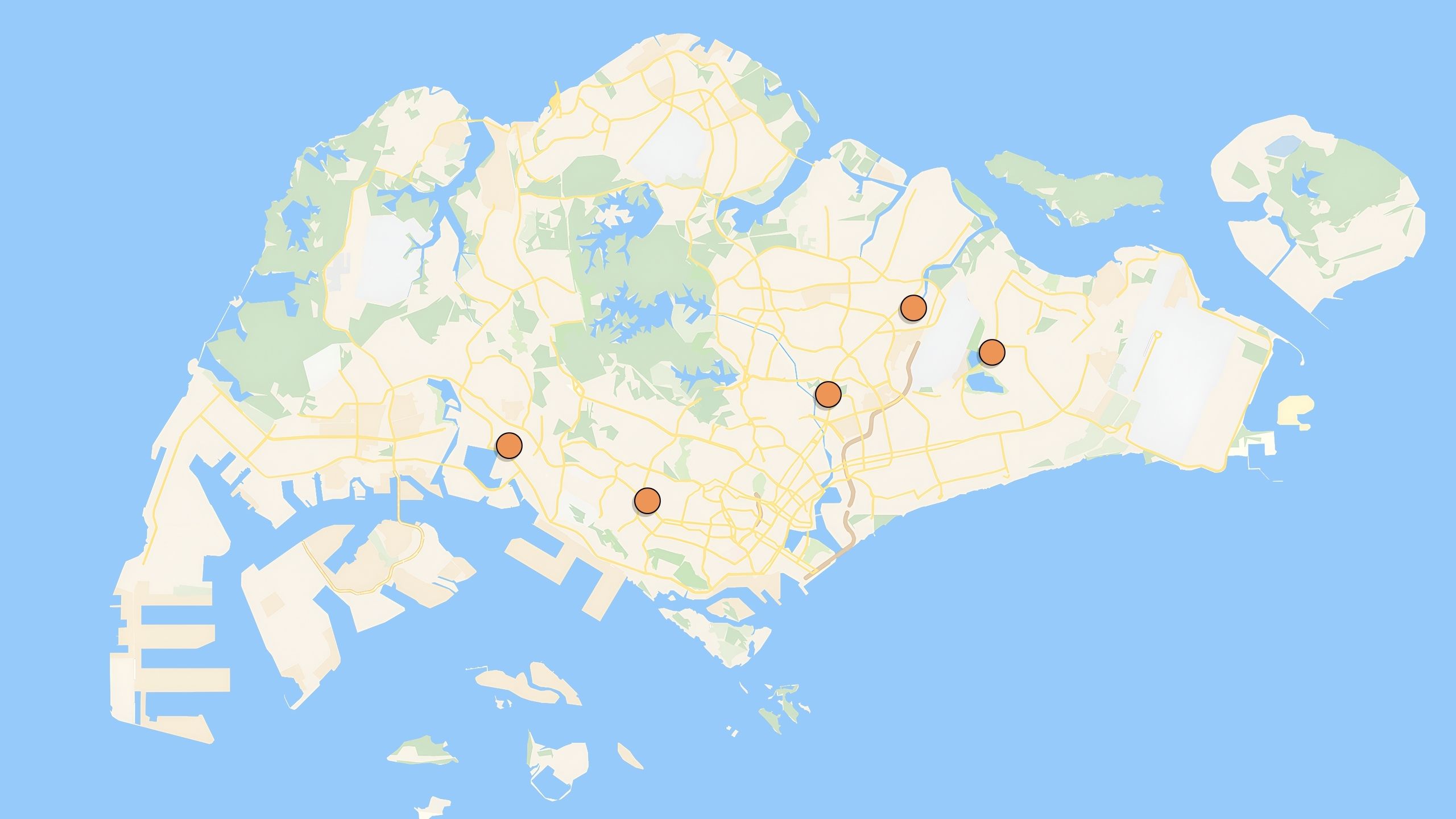We Ranked The Most Important Things To Consider Before Buying A Property In Singapore: This One Came Top
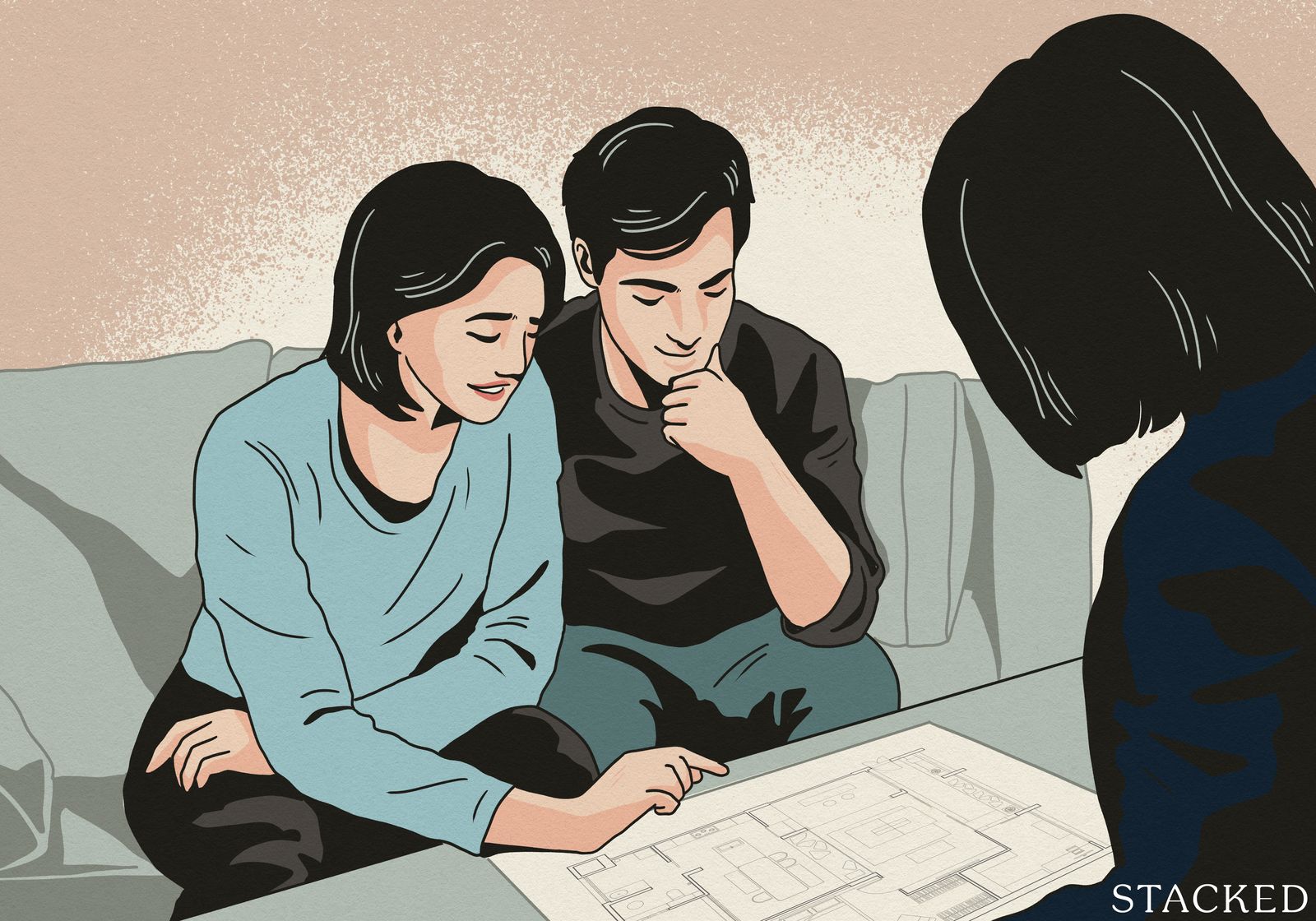
Get The Property Insights Serious Buyers Read First: Join 50,000+ readers who rely on our weekly breakdowns of Singapore’s property market.
A seasoned content strategist with over 17 years in the real estate and financial journalism sectors, Ryan has built a reputation for transforming complex industry jargon into accessible knowledge. With a track record of writing and editing for leading financial platforms and publications, Ryan's expertise has been recognised across various media outlets. His role as a former content editor for 99.co and a co-host for CNA 938's Open House programme underscores his commitment to providing valuable insights into the property market.
When choosing a property, there are so many variables and considerations that it’s almost impossible to meet them all. Some of these factors are even contradictory (e.g., wanting to keep prices low, but also wanting a freehold property). Some might handwave this and say it’s just a “want cheap, want good” Singaporean attitude, but we think a better approach is to rank the priorities before you rank the project options. So, for the sake of your sanity, here’s a practical structure you can follow:
The pyramid of considerations
Ranked in general order of importance, these are:
1. Price, surrounding alternatives, and future changes
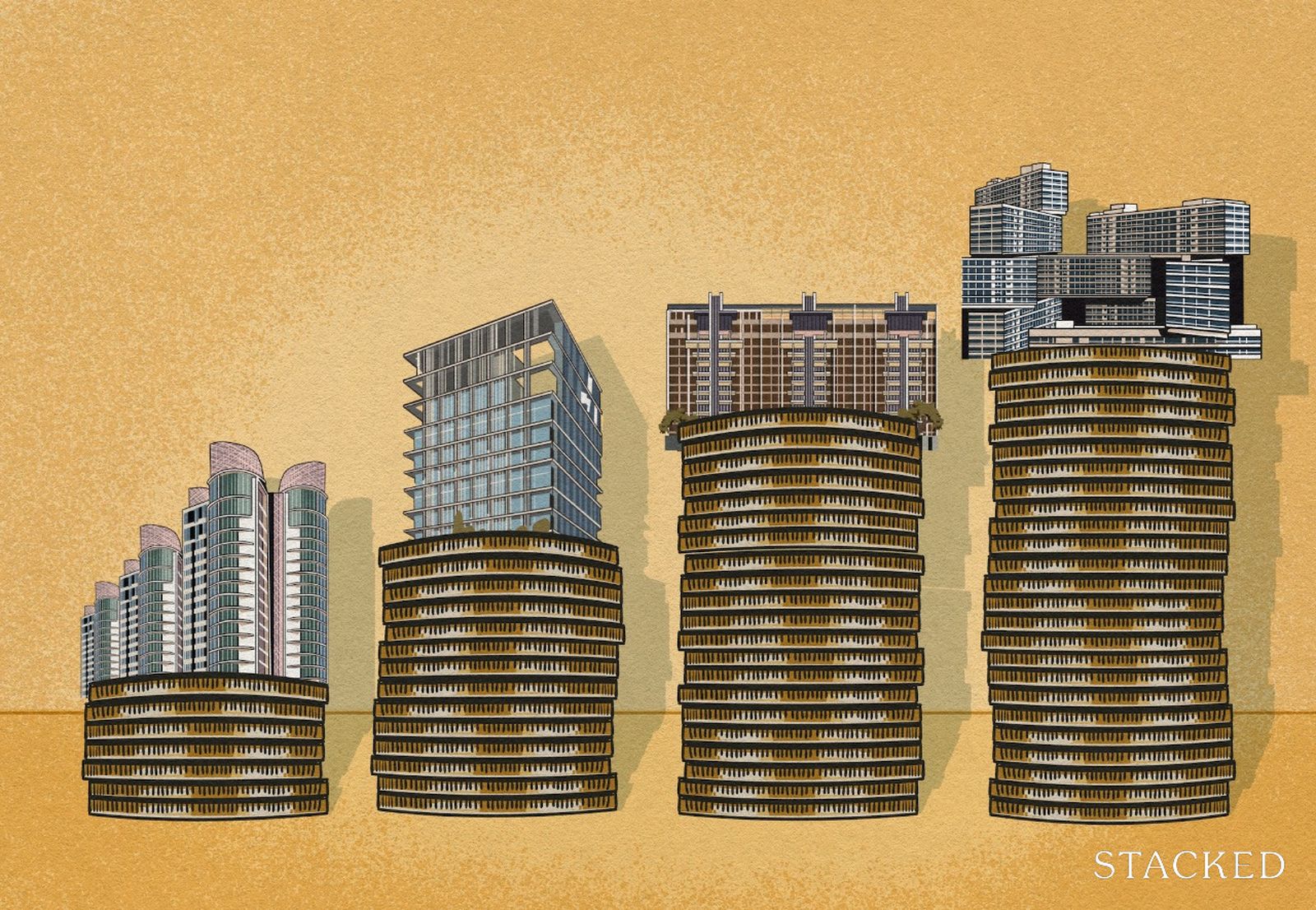
These are the three top priorities, with the first one being price. The main reason is, of course, just your ability to afford the project. This particular point is impossible to generalise, as everyone has a different financial situation (e.g., do you have sale proceeds from a previous home, or is this the first purchase? Can you qualify for financing from the banks? What are your current savings and income levels?)
As a loose rule of thumb, we’d suggest the old 3-3-5 method: that is, the property you pick should have monthly repayments at 30 per cent of your combined monthly income, you should have 30 per cent of the property price saved up before buying, and the property shouldn’t exceed five times your combined annual income.
Comparing to the surrounding alternatives
A good way to make these comparisons is to follow the methods we used on Stacked, and we’ve done a few for free in articles like these; you can also find them in our condo reviews.
But in the off chance you can’t get in touch with us, here’s our usual approach:
Neighbourhood-Specific Benchmarking
We start by identifying all relevant existing private condos nearby, especially newer ones with similar unit types. We look at:
- Transaction volumes over time
- Unit size, mix, and layout types
- Buyer demographic (e.g., proportion of HDB upgraders)
- Average resale price by bedroom type
Price Point Contextualisation
We benchmark the condo’s indicative pricing against:
- Nearby resale condos (try to keep it within one-kilometre, and against condos with similar sizes; benchmarking a large condo against a boutique condo, for example, isn’t very useful)
- Other current new launches across Singapore with similar configurations, this time even if they’re not in the same district
- Historical land cost and recent GLS tenders. This provides a deeper view of whether pricing reflects land cost realities or overconfidence in market demand.
Buyer Target Group Alignment
We profile the likely buyer pool:
- Is the project geared toward HDB upgraders or luxury buyers?
- If upgraders, then are price points realistic based on recent MOP BTO gains?
- How many buyers from the area are HDB upgraders versus private owners?
This ensures we’re not just comparing prices, but matching products to market segments.
Resale Exit and Demand Potential

Lastly, we consider the exit strategy and potential resale demand:
- Are similar units in older condos moving?
- What are the risks with smaller units (e.g., one-bedders) in upgrader estates?
- How might newer BTO completions shift upgrader demand in 5 to 10 years?
You do need to ensure your information sources are correct, so remember to use actual transactions as shown on URA records, and not the asking prices on property portals. Generally, the newer the condos you compare to, the easier this process will be (partly because older condos may lack available floor plans, or have very high square footage but less efficient layouts).
Studying the surrounding property plots
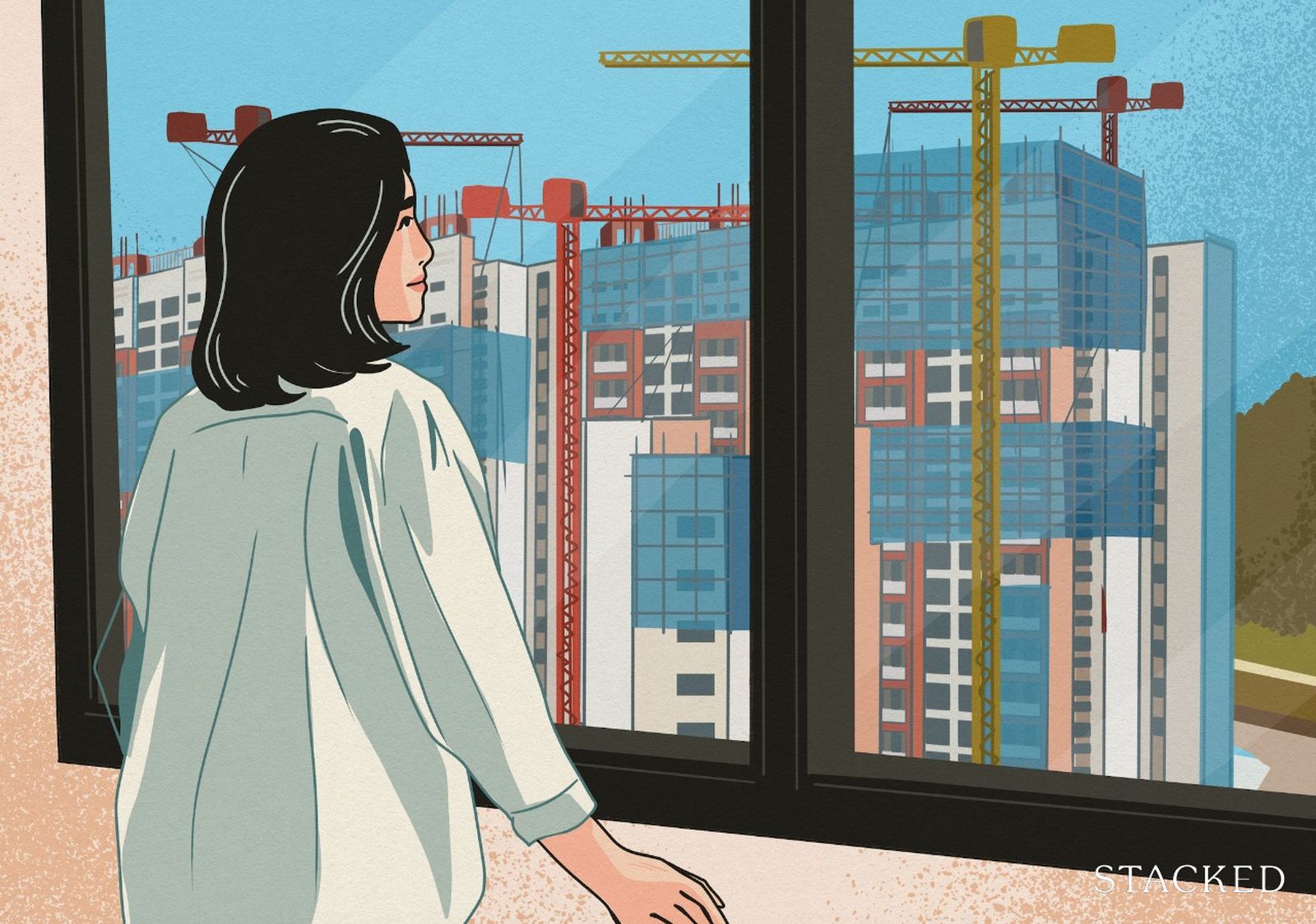
A condo might look ideal today, but what about five or ten years from now? We have a longstanding guide here on how to interpret URA’s Master Plan, which will help you out.
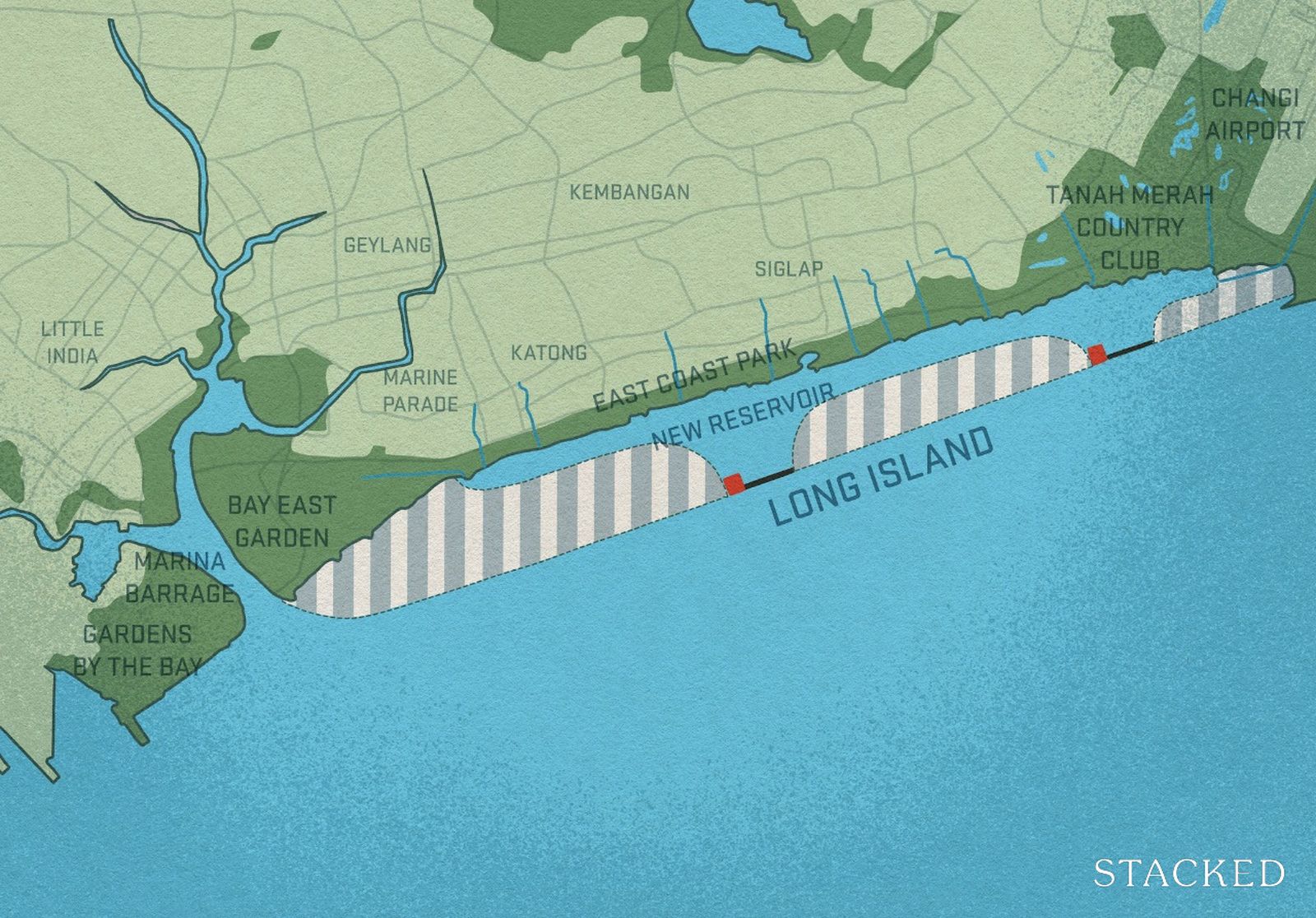
Here’s what to broadly consider:
- Density and future neighbours: Check whether nearby plots are zoned for low, mid, or high-density housing. This gives you a clue about future competition, potential noise, and whether that unblocked view might disappear.
- Growth catalysts: Proximity to upcoming commercial hubs, white sites, or mixed-use developments may bring new amenities and boost future resale appeal.
- Liveability risks: Keep an eye out for surrounding zones that may introduce traffic, noise, or operational disruptions; typical examples are industrial areas, hospitals, or places of worship (but not everyone agrees on these)
2. Accessibility, Size and Layout, and Schools
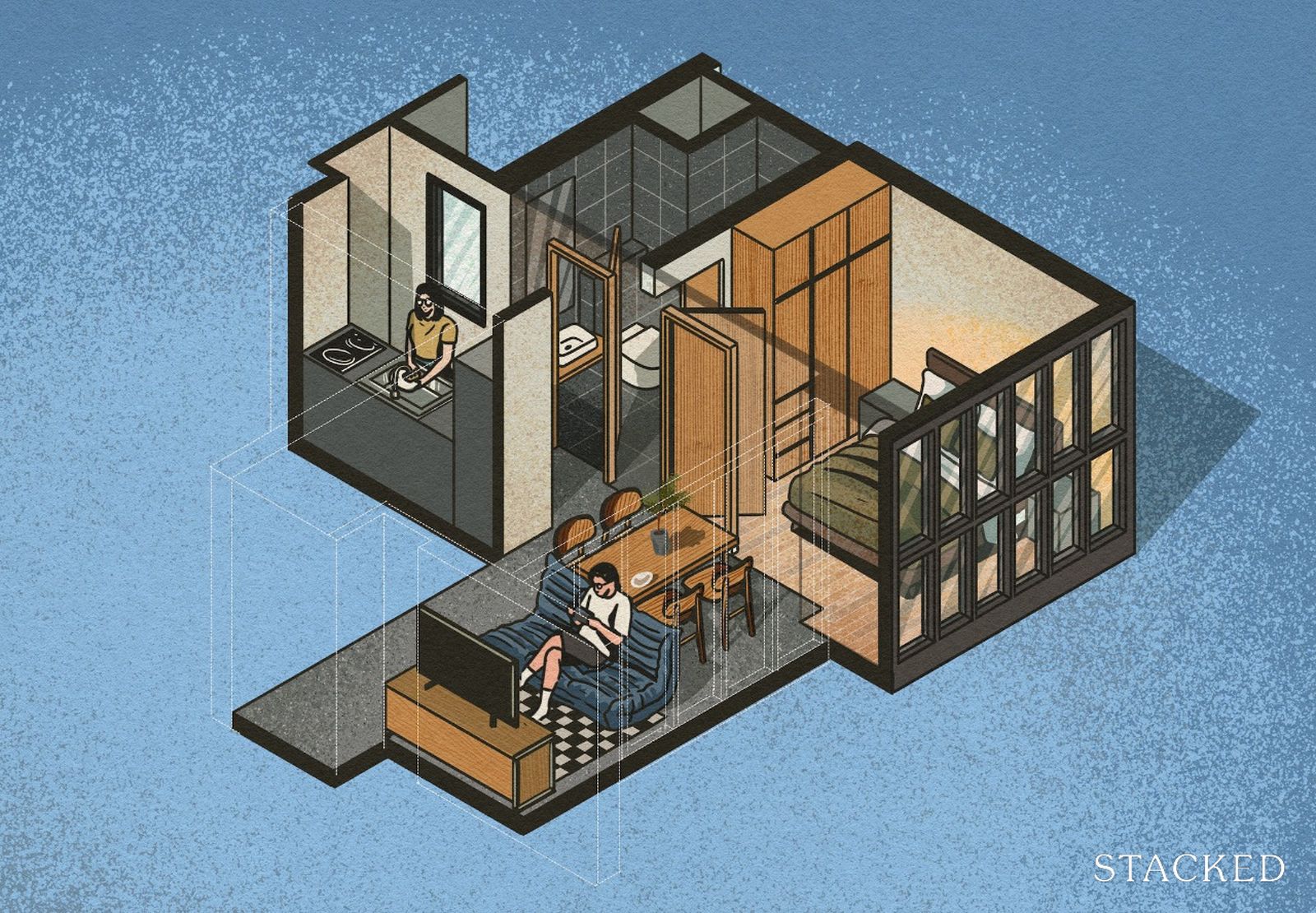
For accessibility, don’t just look for any MRT station nearby. Rather, look for planned transport nodes, such as new MRT lines or expressway links. These can boost long-term value (and sometimes come with short-term construction disruption).
With many more condos today having a nearby train station, the number of train lines often matters more than just having a station nearby. A condo near Dhoby Ghaut, for instance, has access to the North-South Line, North-East Line, and Circle Line. This will be valued more than a condo project with a single-line station, even if both are within walking distance.
This can also get tricky, as some condos are more or less accessible than they first seem on paper. Normanton Park, for instance, looks inaccessible to many on Google Maps; but the bus stop right outside the condo quickly connects to Fusionopolis, which is where One-North MRT station is; this is just one stop from Buona Vista and two stops from Holland V.
Size and layout
You should go beyond price psf and simple square footage. It’s more important to work out the liveable spaces and whether those spaces support your lifestyle. Ask the following:
- Is the layout more functional? (e.g., dumbbell vs corridor format)
- Are there layout compromises? (e.g., oversized AC ledge, small bedrooms versus surrounding options)
- What features are included? (e.g., household shelter, proper kitchen, ventilation)
- How does usable space compare?
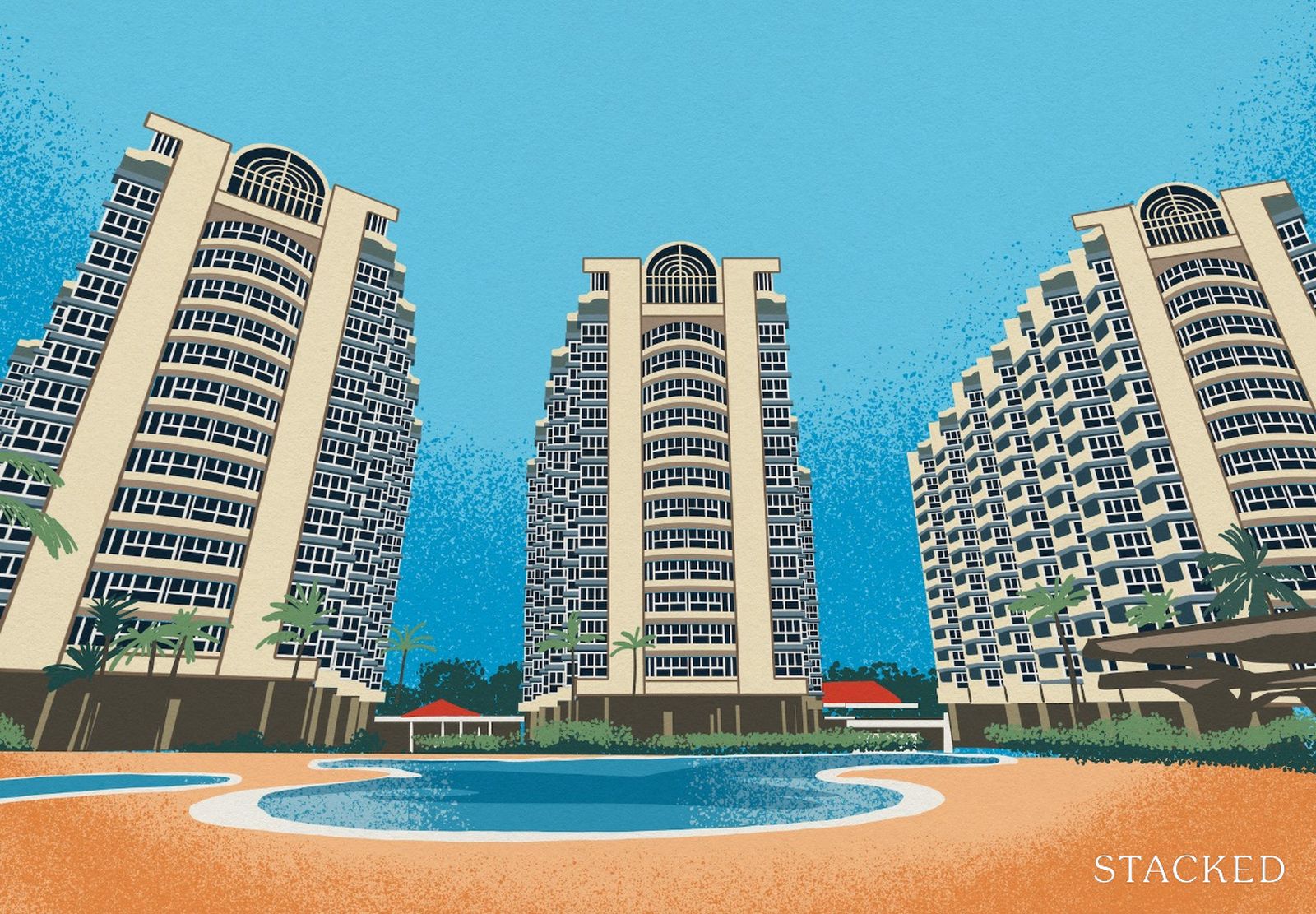
Do note that for pre-harmonisation condos, certain space-wasting features like air-con ledges, strata void spaces, very large bay windows and planter boxes, etc., can make a unit seem very big on paper, but quite tight on actually liveable space.
Educational catchments (Schools)
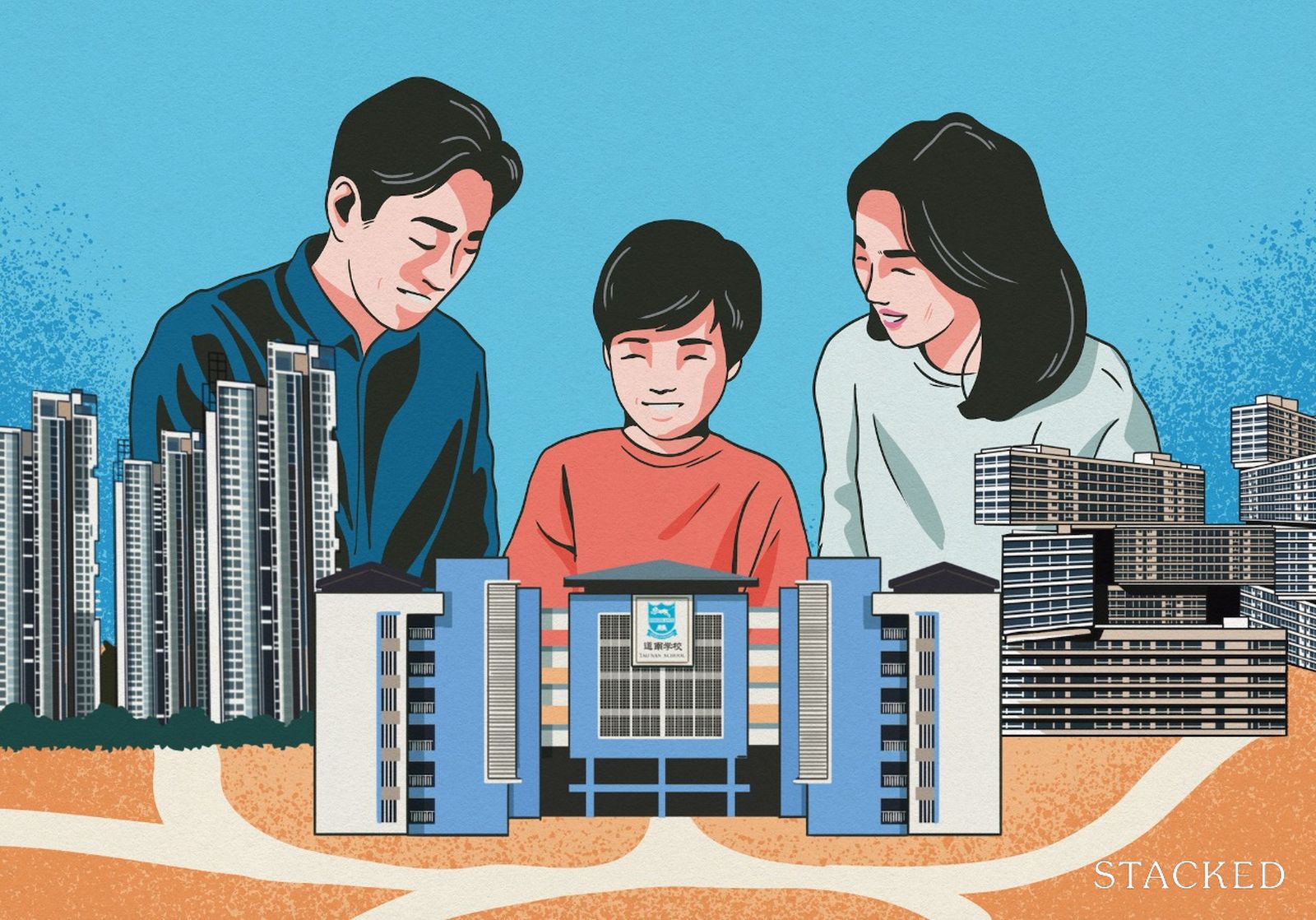
New or existing schools within one kilometre can improve both saleability and access to priority admission. For purposes of resale gains, note that buyers tend to care more about Primary schools above others.
For own-stay use, however, you can be more specific to your needs (e.g., focus more on Secondary or Tertiary institutions that your older child is actually going to, rather than a ‘brand name’ Primary school).
As a quick note for HDB buyers, remember to consider how your Minimum Occupancy Period (MOP) is relevant to this, as you’re locked into the area for five years (or 10 years if you have a Prime or Plus flat).
3. Prominence and established transaction history
These two qualities are somewhat interlinked. A good example of prominence would be “benchmark” condos, such as Ardmore Park, Leedon Residence, or Maple Woods. There isn’t any official list of benchmark condos mind you; these are simply the projects that realtors and investors constantly use as reference points.
For almost two decades now, for example, District 10 condos have had their gains, spaciousness, and facilities measured against Ardmore Park. Due to this prominence, Ardmore Park gets a lot of attention as a resale condo, despite its current age (it was built in 2001). This helps significantly in saleability, i.e., it doesn’t guarantee a good price, but it will likely garner a lot more inquiries.
Condos with a high level of prominence also tend to have more established transaction histories. This helps to prevent the anchoring effect, where one unusually low or high transaction can skew prices in a condo with few transactions. If you’re selling a new and little-known condo, for instance, with just one or two transactions, your potential gains become much more volatile.
While less important than issues like proximity to schools, a good price, etc., this quality is a definite “nice to have.”
4. Freehold versus Leasehold
There’s often an inordinate amount of importance placed on this, perhaps because it’s psychologically reassuring to think of the property as “yours forever.” Or perhaps not having a 99-year lease contributes to differentiating it further from an HDB project.
So, despite our pointing out on numerous occasions that leasehold often beats freehold, and that leasehold and freehold projects both tend to last only 25 to 39 years anyway, some buyers like to pay a price premium for freehold.
We can say that logically, freehold makes more sense if you intend to hold for a very long period, or if yours is a freehold project among leasehold projects (it’s much less impressive in, say, Districts 9 or 10, where almost everything else is freehold anyway).
But the impact is a lot smaller than the other issues on this list, and it’s something we might treat as a tiebreaker (e.g., all things being even, and you’re torn between two choices, perhaps one being freehold can help make the final tilt in your choice.)
If you need help picking your property or are still stumped by incomplete information, reach out to us at Stacked, or follow us for in-depth reviews of new and resale projects alike. If you’d like to get in touch for a more in-depth consultation, you can do so here.
Ryan J. Ong
A seasoned content strategist with over 17 years in the real estate and financial journalism sectors, Ryan has built a reputation for transforming complex industry jargon into accessible knowledge. With a track record of writing and editing for leading financial platforms and publications, Ryan's expertise has been recognised across various media outlets. His role as a former content editor for 99.co and a co-host for CNA 938's Open House programme underscores his commitment to providing valuable insights into the property market.Read next from Property Advice

Property Advice I Own A 55-Year-Old HDB Flat, But May Have To Sell — Can I Realistically Buy A Freehold Condo With $700K?

Property Advice We Own A 2-Bedder Condo In Clementi: Should We Decouple To Buy A Resale 3 Bedder Or Sell?

Property Advice Most New Condo Buyers in Singapore Forget to Check This Before Buying (Until It’s Too Late)
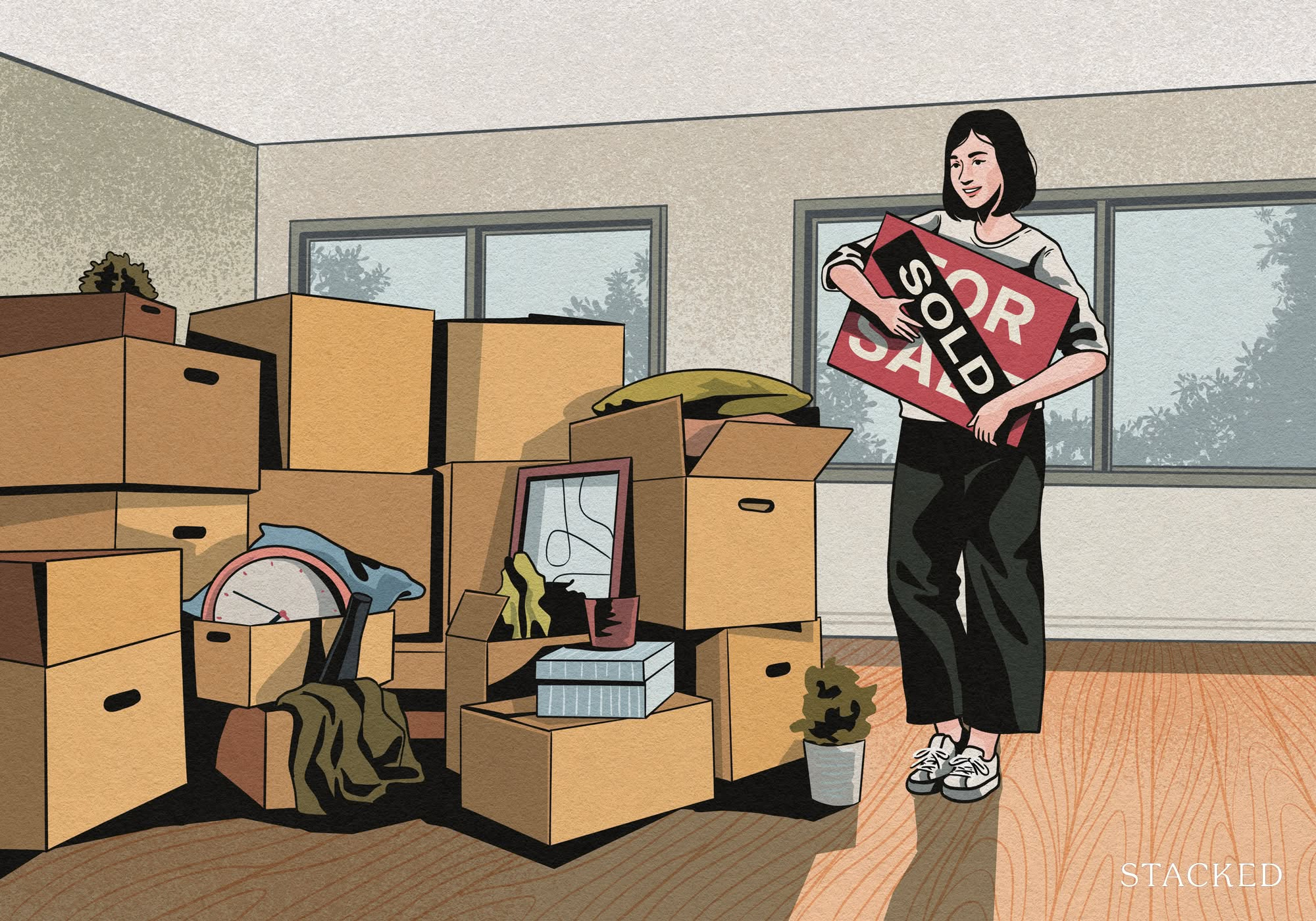
Property Advice Why I Sold My 40-Year-Old Jurong Flat For A Newer Bukit Panjang One: A Buyer’s Case Study
Latest Posts
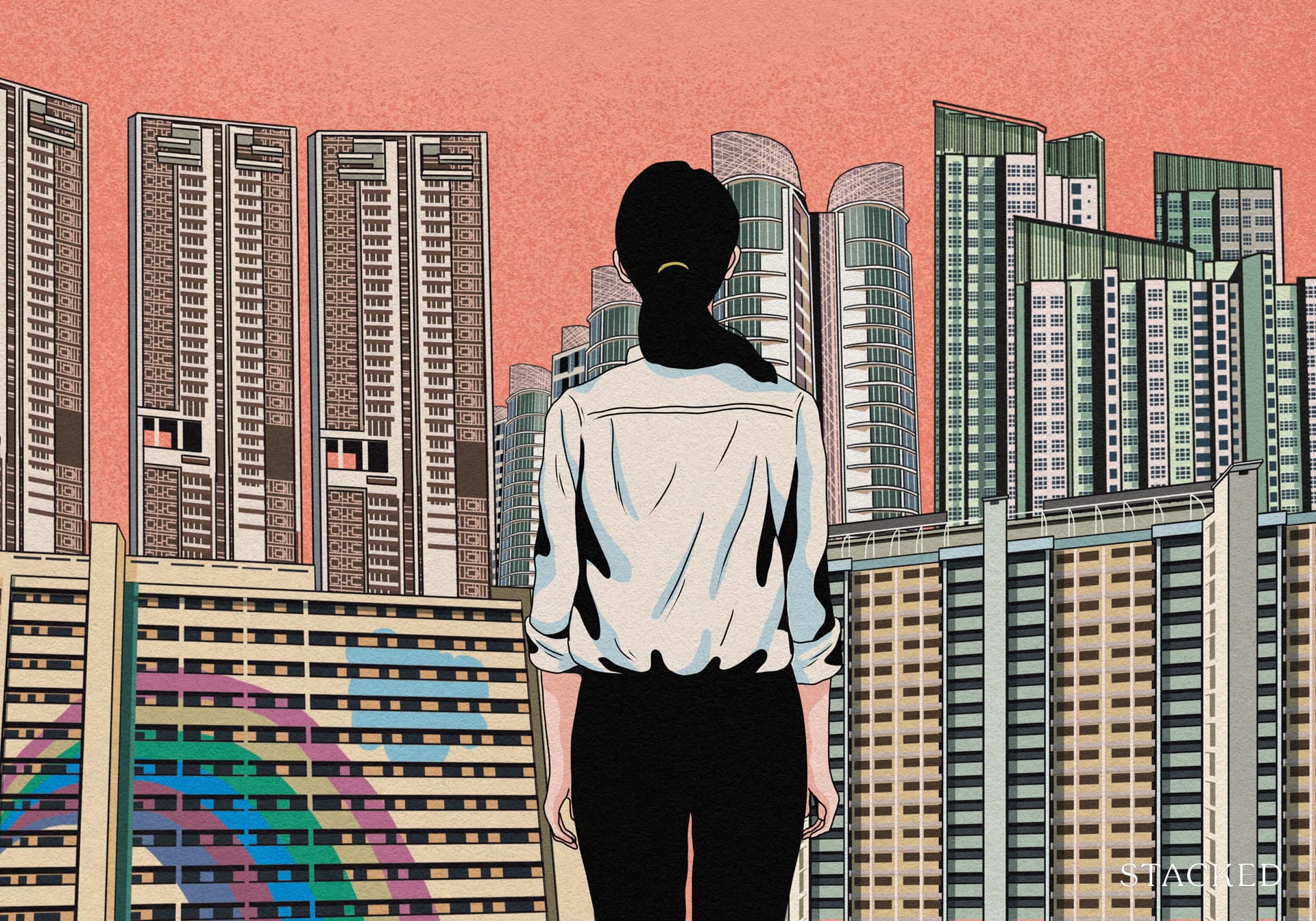
Property Market Commentary Why It’s So Much Harder For Young Singaporeans To Buy A Home Today
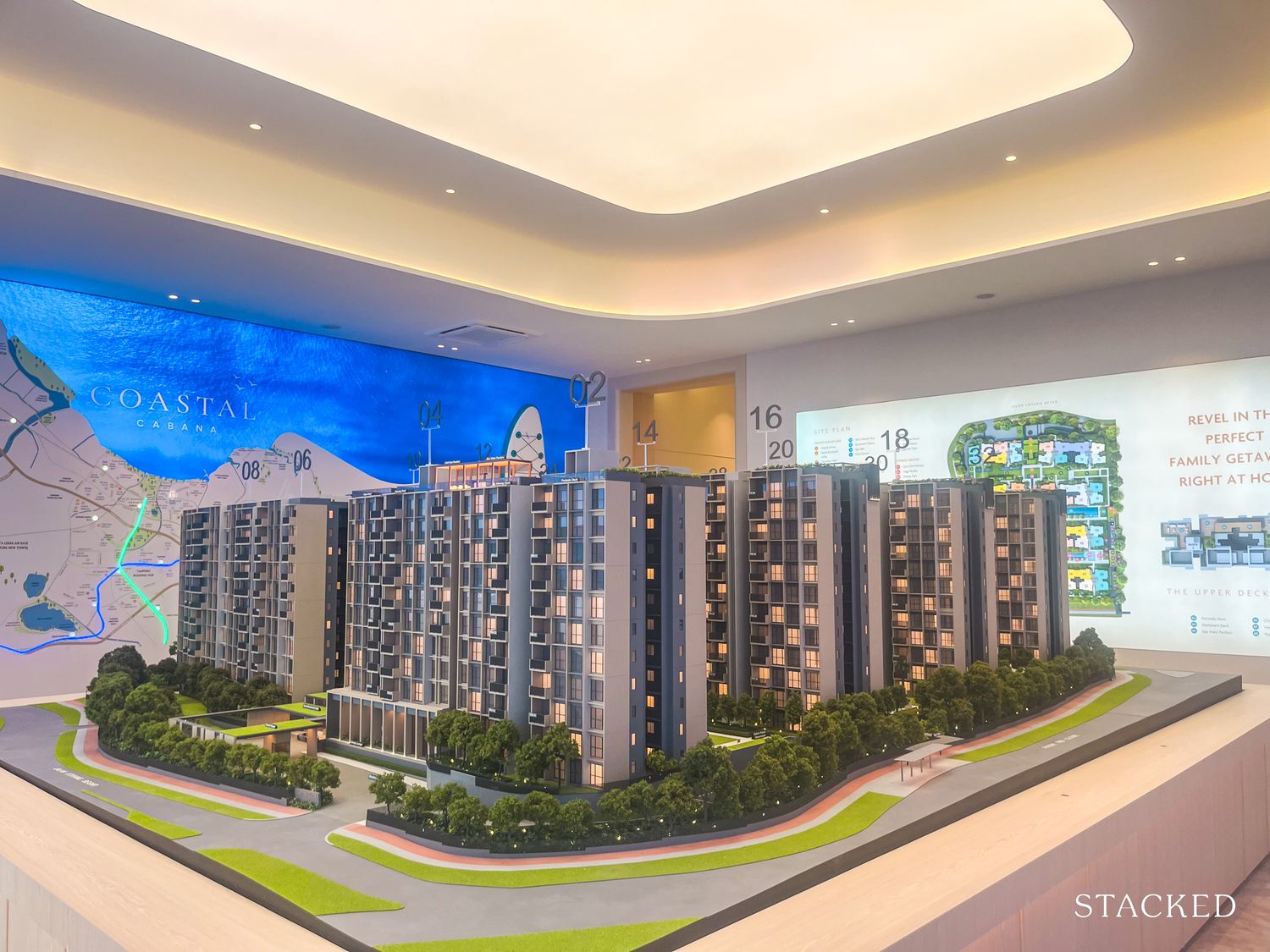
New Launch Condo Reviews Coastal Cabana EC Review: A Unique EC With Sea Views Priced From $1.438M
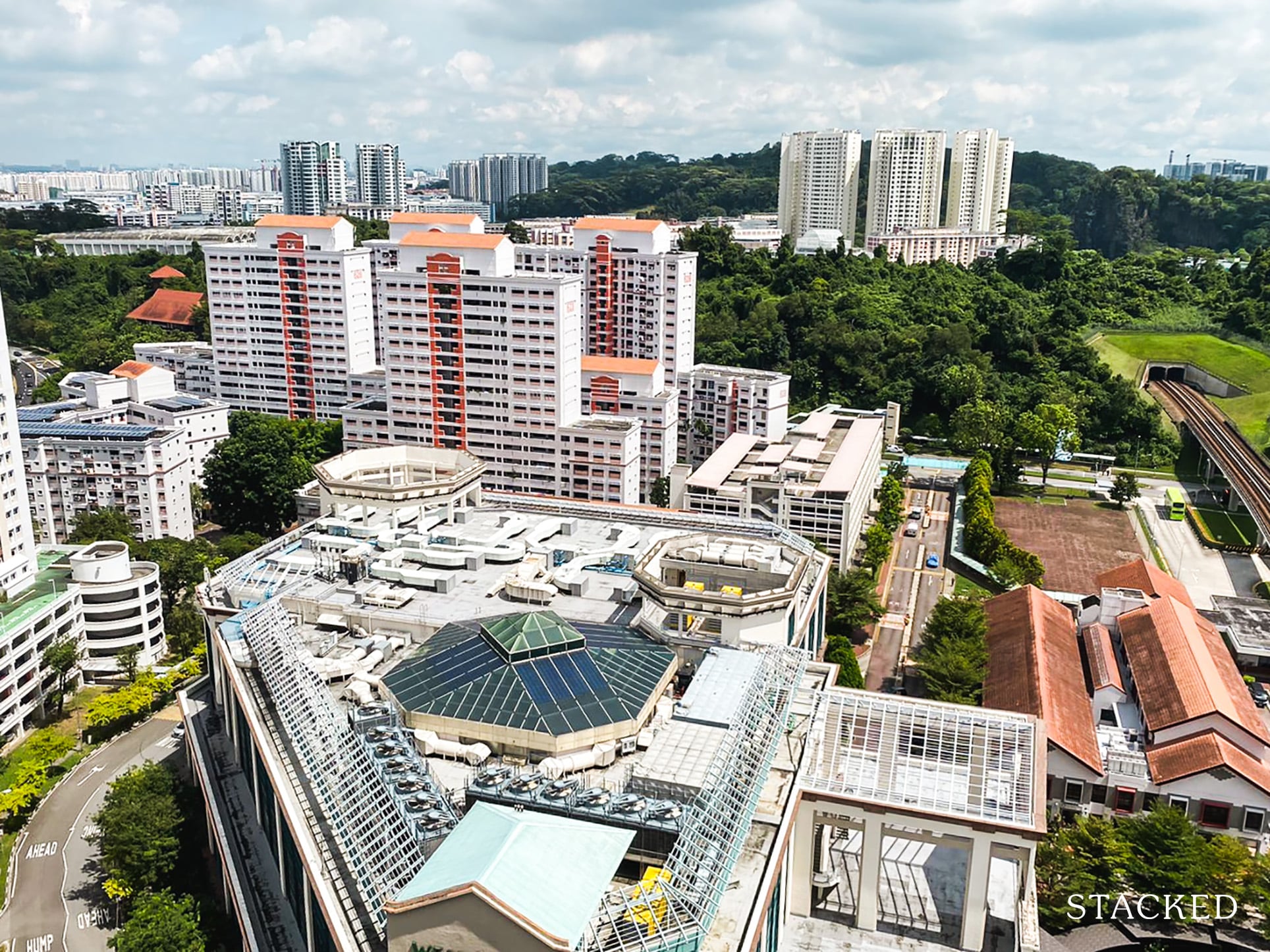
Property Market Commentary Which HDB Towns Sold the Most Flats This Year? The 2025 Rankings Reveal Some Surprises
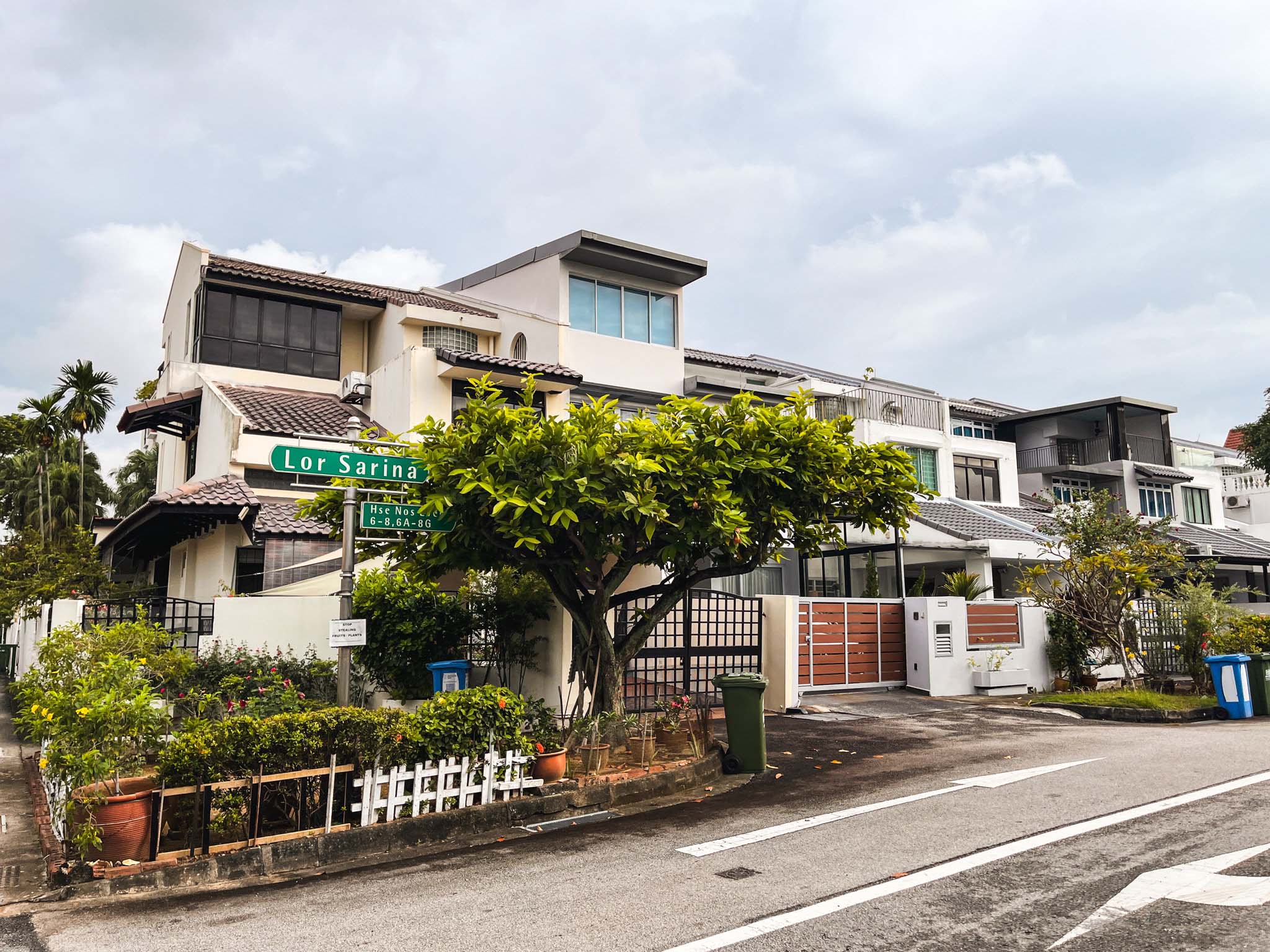
Landed Home Tours We Toured a Freehold Landed Area Buyers Overlook — It’s Cheaper (and Surprisingly Convenient) From $3.2M
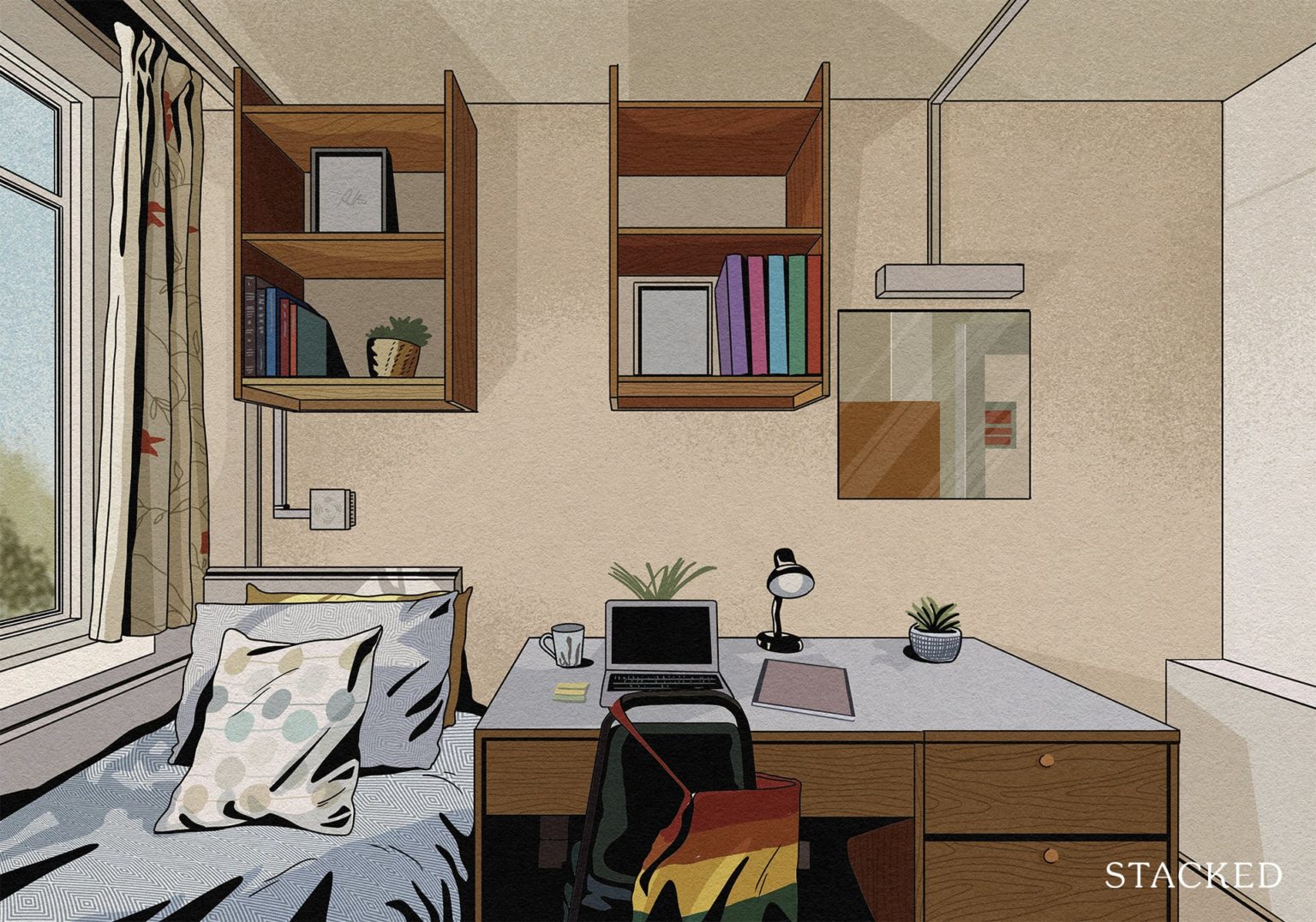
Singapore Property News The Hidden Costs of Smaller Homes in Singapore
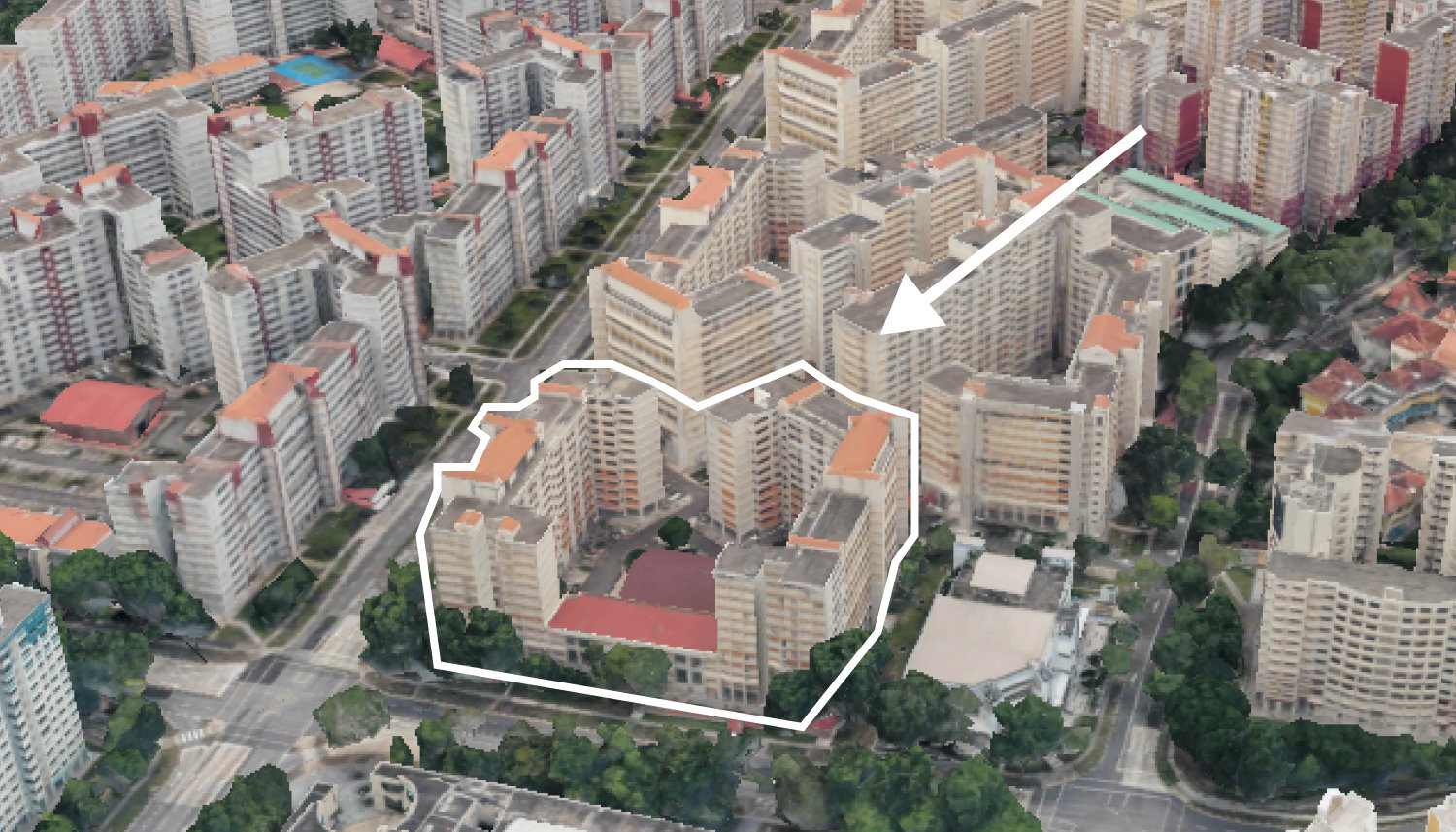
On The Market We Found the Cheapest Yet Biggest 4-Room HDBs You Can Buy From $480K
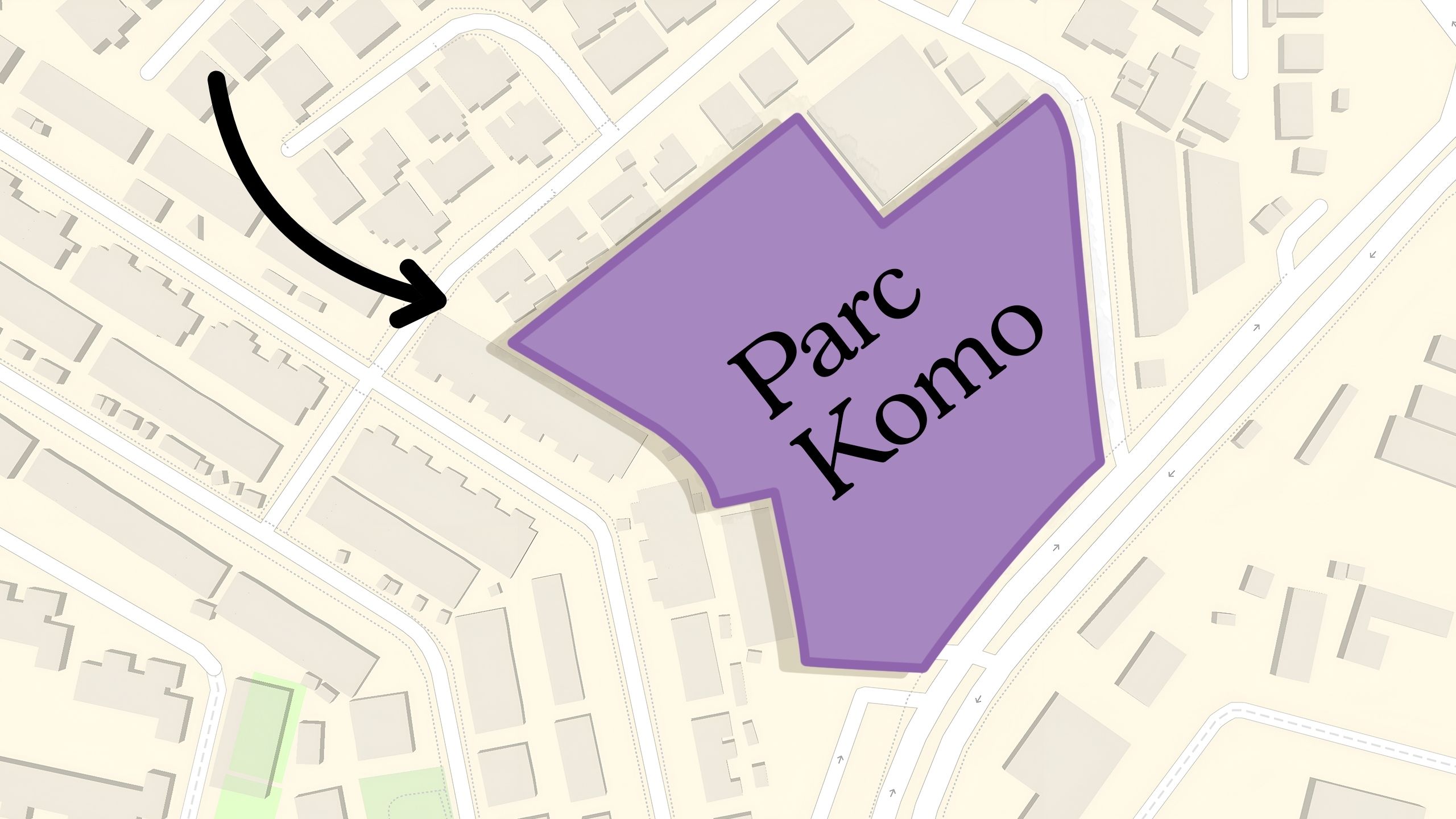
Pro Why This Freehold Mixed-Use Condo in the East Is Underperforming the Market
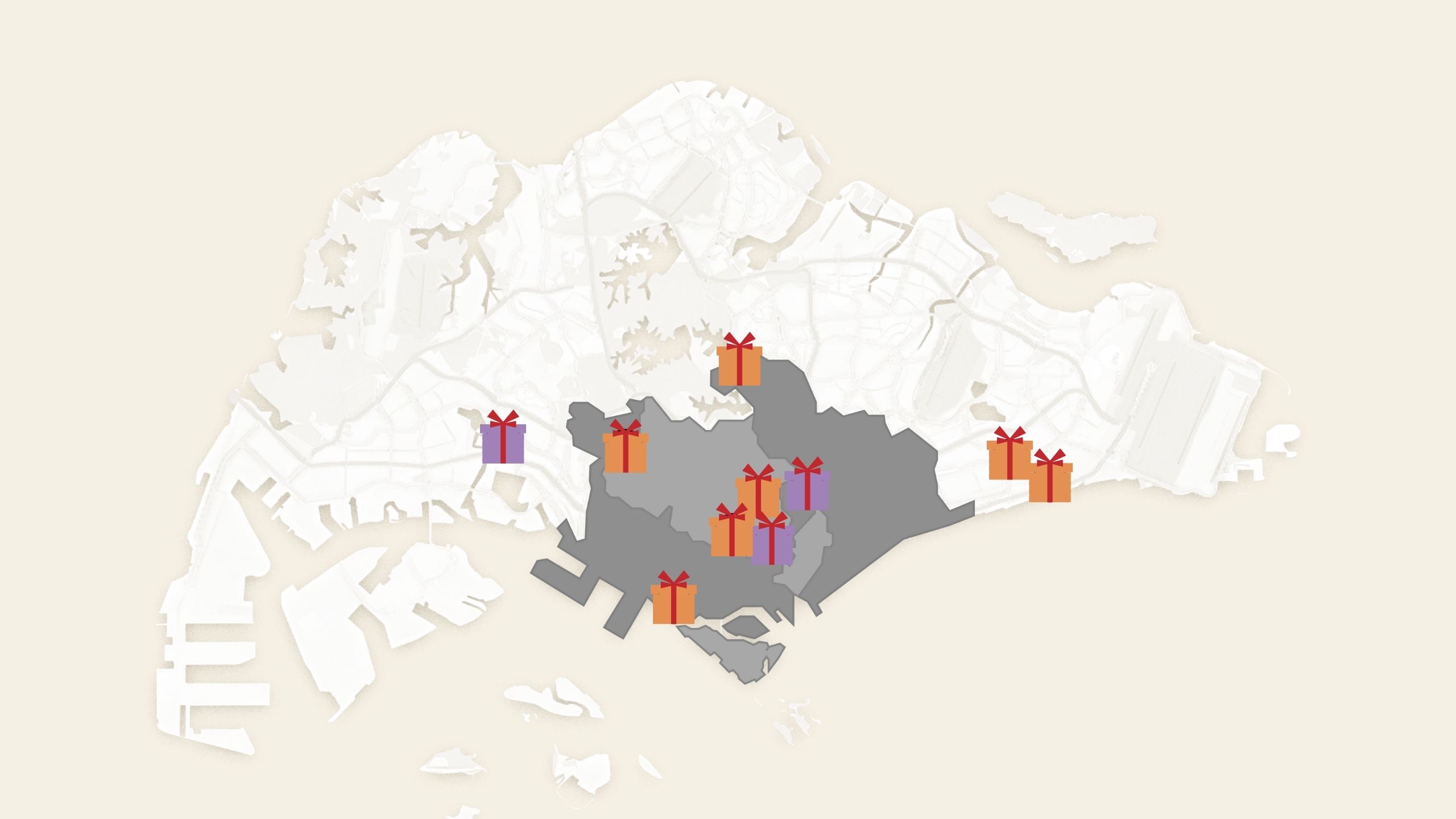
Singapore Property News 10 New Upcoming Housing Sites Set for 2026 That Homebuyers Should Keep an Eye On

Homeowner Stories I Gave My Parents My Condo and Moved Into Their HDB — Here’s Why It Made Sense.
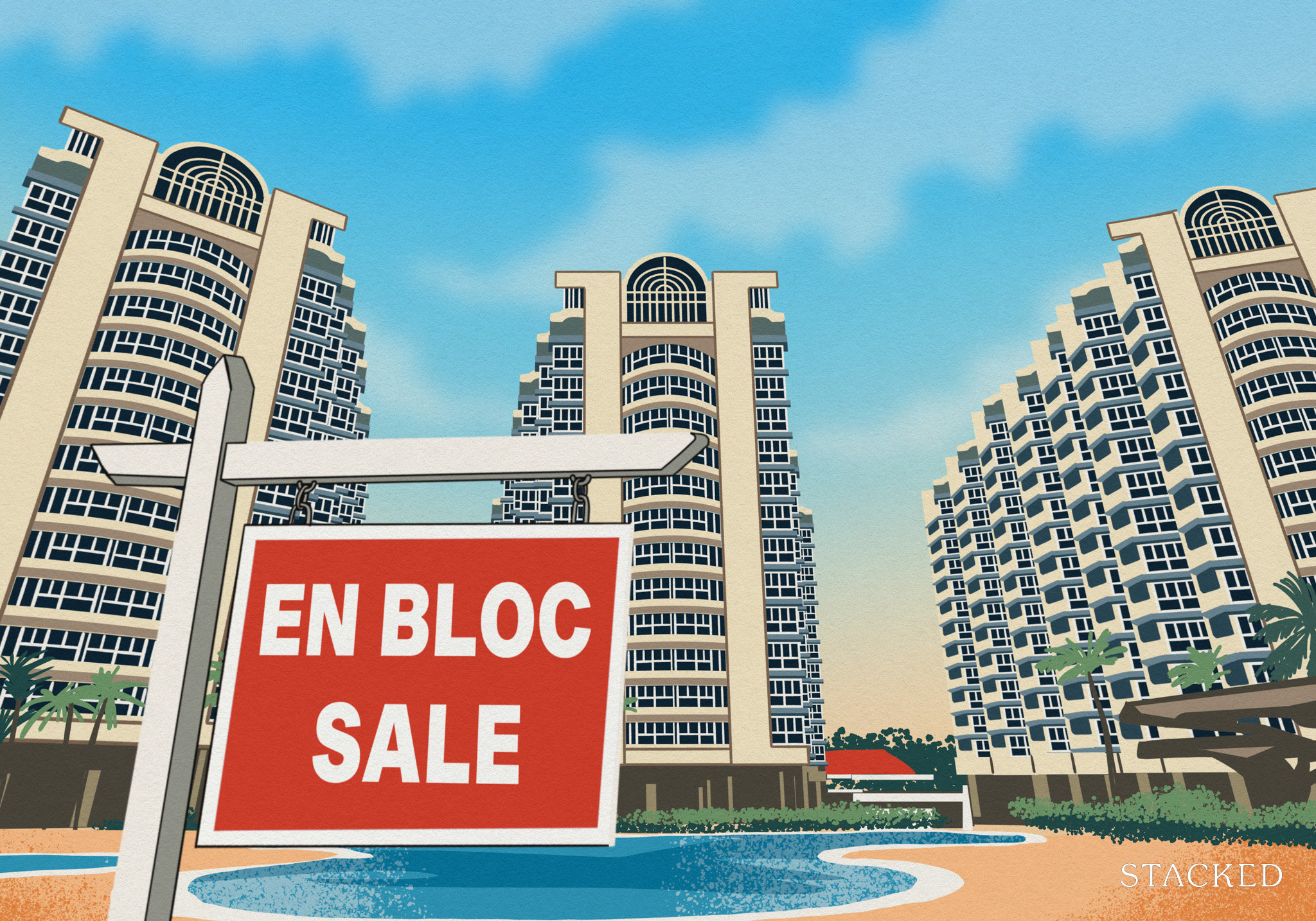
Singapore Property News Will Relaxing En-Bloc Rules Really Improve the Prospects of Older Condos in Singapore?
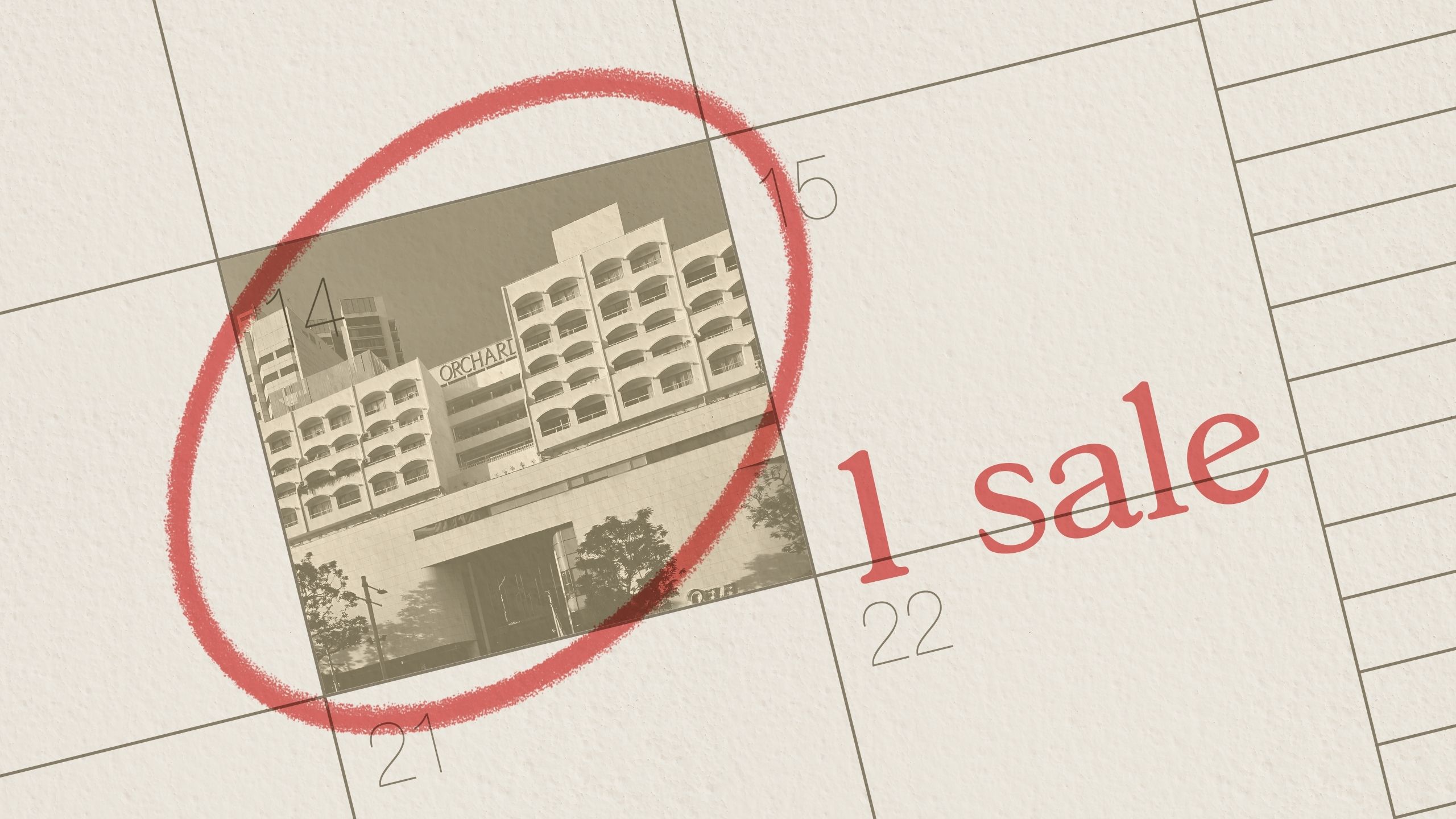
Property Market Commentary The Rare Condos With Almost Zero Sales for 10 Years In Singapore: What Does It Mean for Buyers?

Pro Why This Large-Unit Condo in the Jervois Enclave Isn’t Keeping Up With the Market
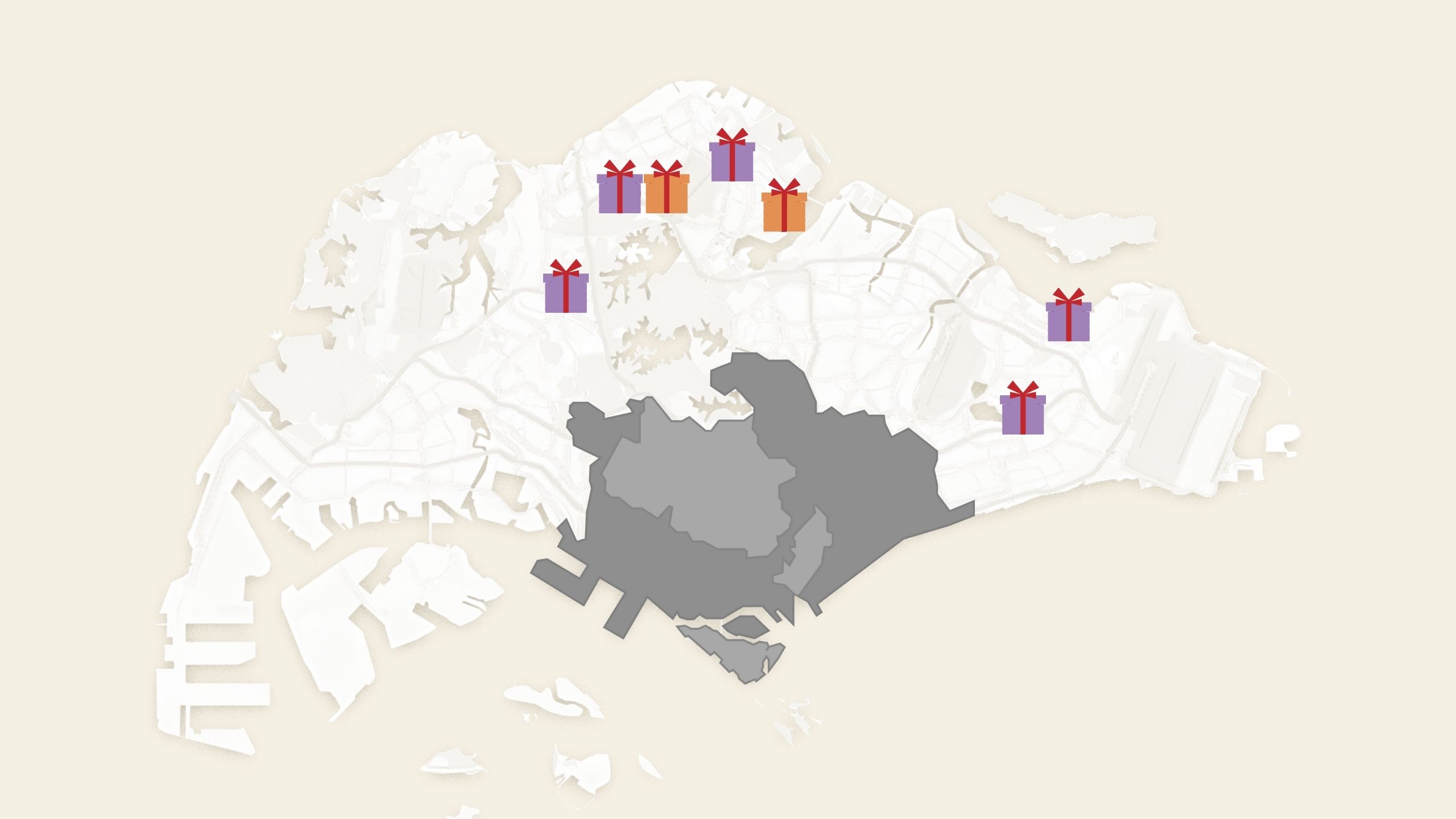
Property Market Commentary 5 Upcoming Executive Condo Sites in 2026: Which Holds the Most Promise for Buyers?
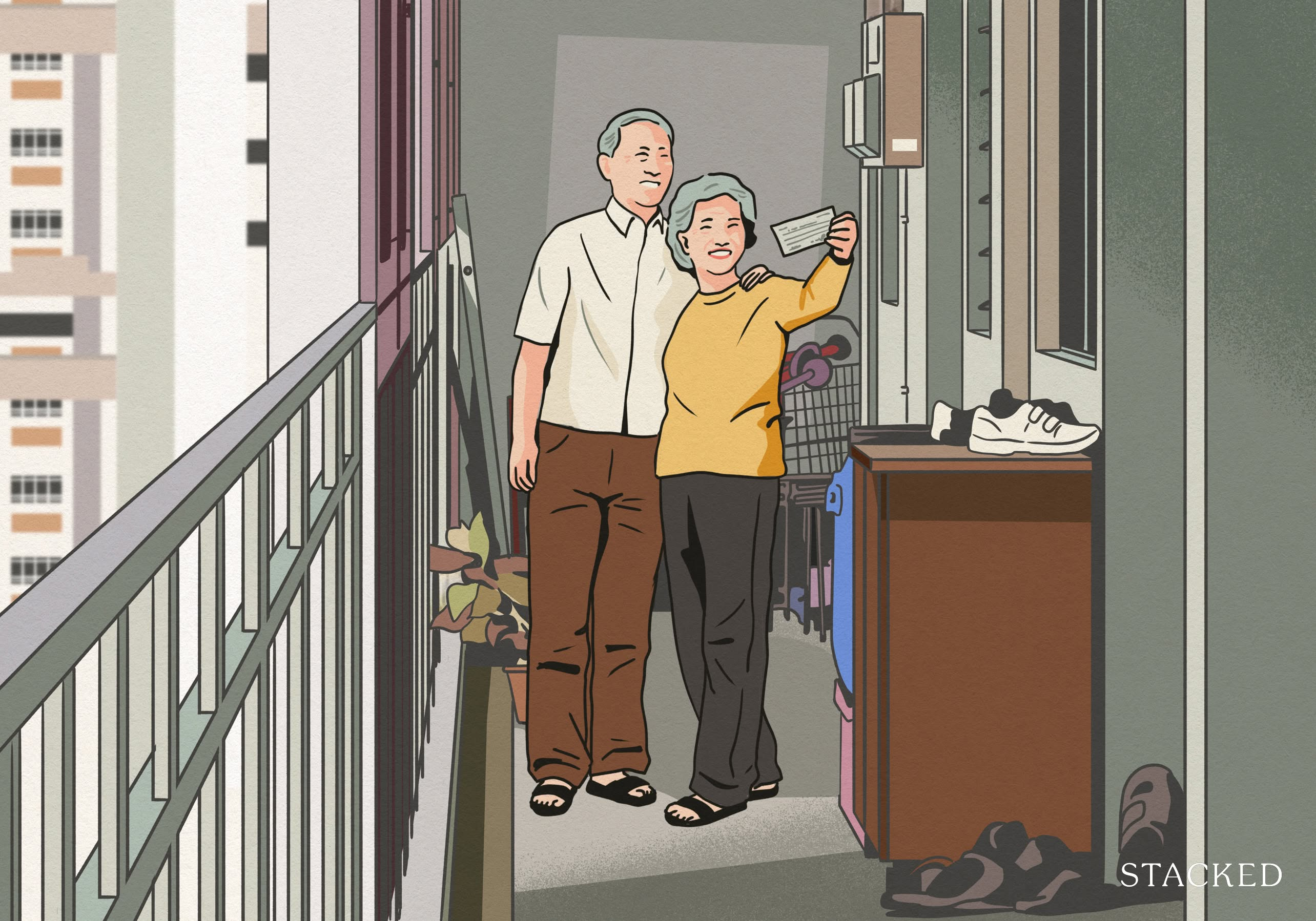
Singapore Property News A Housing Issue That Slips Under the Radar in a Super-Aged Singapore: Here’s What Needs Attention

Landed Home Tours Inside One of Orchard’s Rarest Freehold Enclaves: Conserved Homes You Can Still Buy From $6.8M
